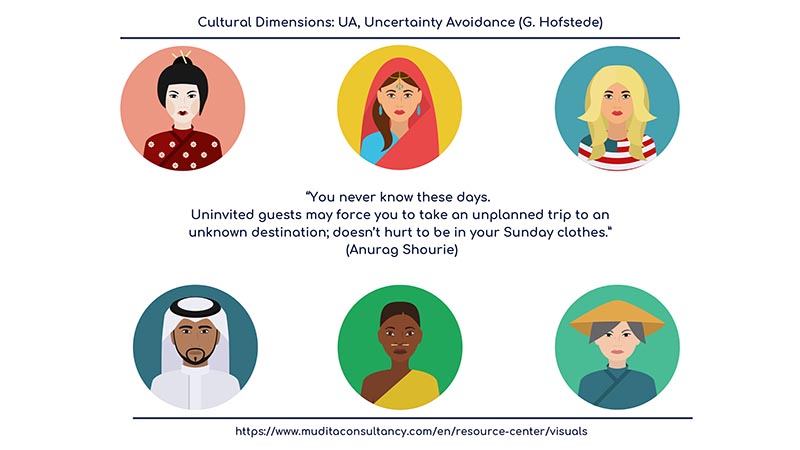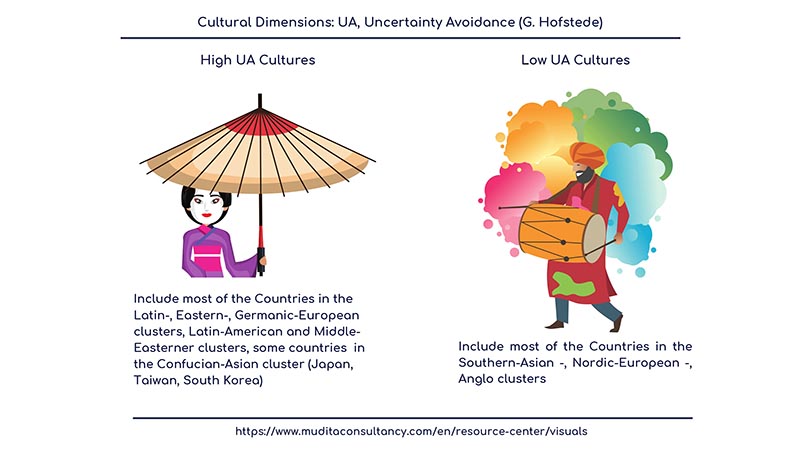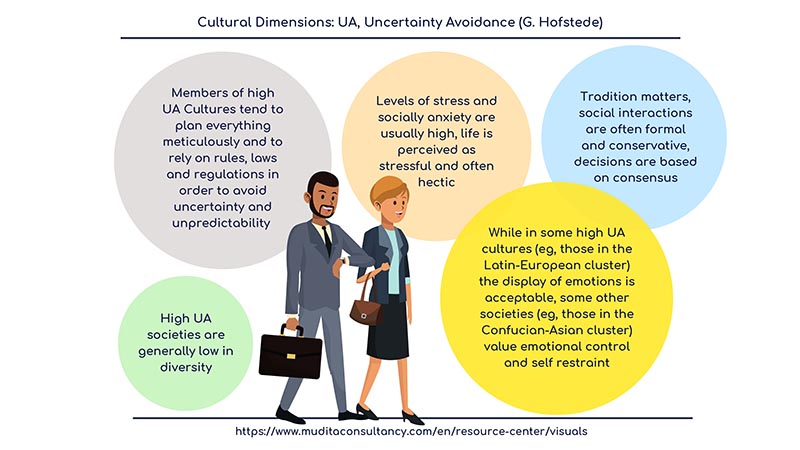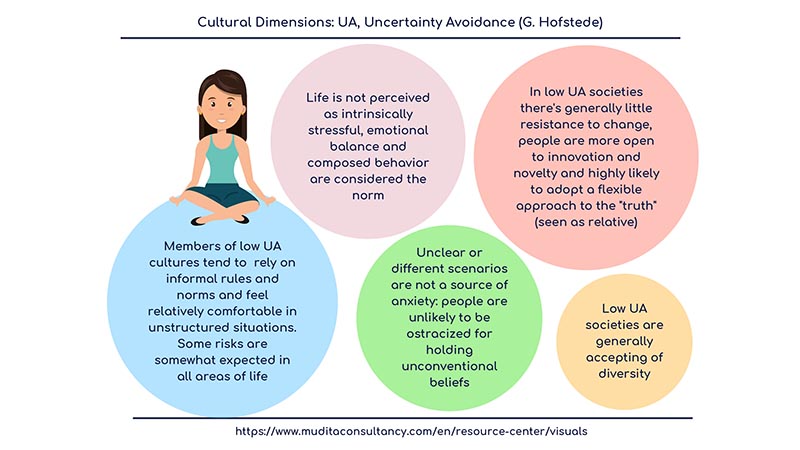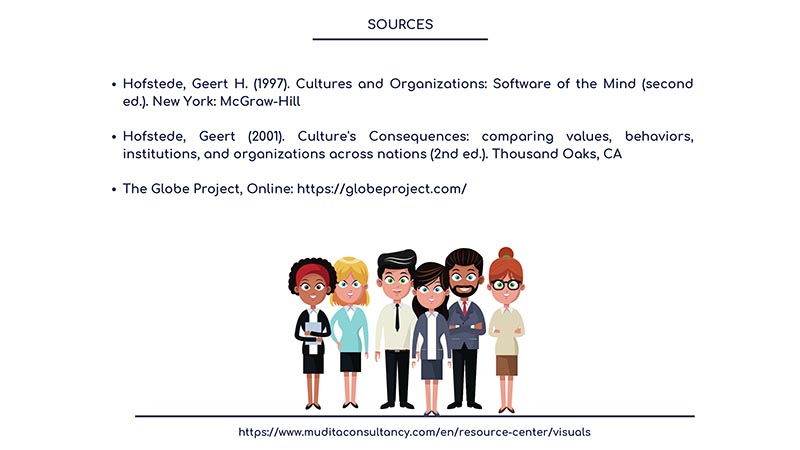Uncertainty Avoidance
You never know these days. Uninvited guests may force you to take an unplanned trip to an unknown destination; doesn’t hurt to be in your Sunday clothes.
- Anurag Shourie -
***
Uncertainty Avoidance, one of Hofstede’s cultural dimensions, is the degree to which members of a specific culture are comfortable with uncertainty and unpredictability.
High UA cultures include most of the Countries in the Latin-, Eastern-, Germanic- Europe clusters, Latin-America and Middle East clusters, some countries in the Confucian-Asia cluster (Japan, Taiwan, South Korea), while low UA cultures include most of the Countries in the Southern-Asia, Nordic Europe, Anglo-American clusters. The UA score for the Sub-Saharan Africa cluster is in the mid range, but, according to the Globe Study these societies “desire to have more Uncertainty Avoidance (i.e., relying on social norms, rules, and procedures) to alleviate unpredictability”.

What are the main differences between high- and low UA cultures?
Let’s find out.
High UA cultures:
- Members of high UA Cultures tend to plan everything meticulously and to rely on rules, laws and regulations in order to avoid uncertainty and unpredictability;
- Levels of stress and socially anxiety are usually high, life is perceived as stressful and often hectic;
- Tradition matters, social interactions are often formal and conservative, decisions are based on consensus (high UA societies are generally low in diversity);
- While in some high UA cultures (e.g., those in the Latin-European cluster) the display of emotions is acceptable, some other societies (e.g., those in the Confucian-Asian cluster) value emotional control and self restraint.
Low UA cultures:
- Members of low UA cultures tend to rely on informal rules and norms and feel relatively comfortable in unstructured situations. Some risks are somewhat expected in all areas of life;
- Life is not perceived as intrinsically stressful, emotional balance and composed behaviour are considered the norm;
- In low UA societies there's generally little resistance to change, people are more open to innovation and novelty and highly likely to adopt a flexible approach to the "truth" (seen as relative);
- Unclear or different scenarios are not a source of anxiety (low UA societies are usually high in diversity): people are unlikely to be ostracized for holding unconventional beliefs.
SOURCES:
- Hofstede, Geert H. (1997). “Cultures and Organizations: Software of the Mind (second ed.)”. New York: McGraw-Hill
- Hofstede, Geert (2001). “Culture's Consequences: comparing values, behaviors, institutions, and organizations across nations (2nd ed.)”. Thousand Oaks, CA
- The Globe Project, Online: https://globeproject.com/
